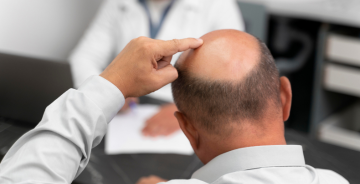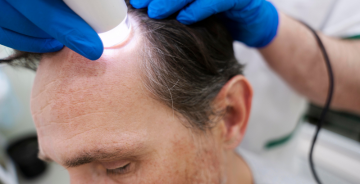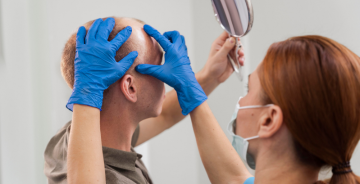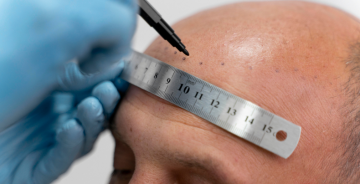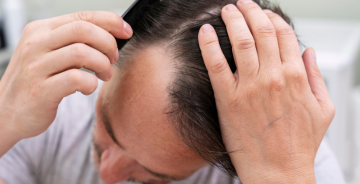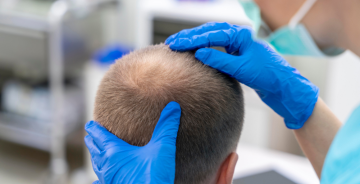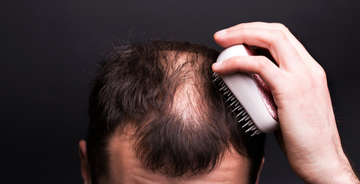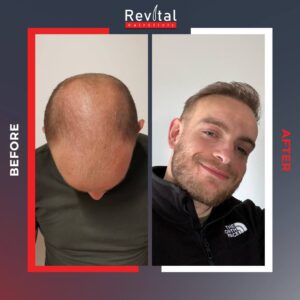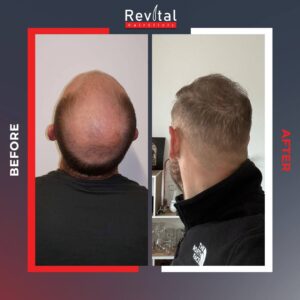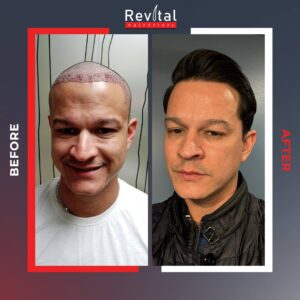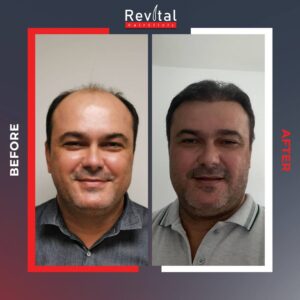Category Blog
30 Sep
Is Sapphire FUE and FUE the same?
Is Sapphire FUE and FUE the Same? Hair loss treatments have evolved significantly over the years, offering various techniques to restore hair in a natural-looking and effective way. Among the most popular methods are FUE (Follicular Unit Extraction) and Sapphire FUE. While both of these procedures fall under the same general category of hair transplantation, there are key differences between them. In this article, we will discuss the fundamental differences between FUE and Sapphire FUE hair transplantation, highlighting the benefits of each and helping you understand which technique might be best suited for your needs. What is FUE Hair Transplantation? FUE (Follicular Unit Extraction) is one of the most widely used methods for hair restoration. It involves extracting individual hair follicles from the donor area (typically the back or sides of the head) and transplanting them into areas that have experienced hair loss or thinning. Key steps in the FUE process: Extraction: Using a small, circular punch tool, individual hair follicles are carefully removed from the donor area. Incision Creation: Tiny incisions are made in the recipient area, where the hair follicles will be transplanted. Implantation: The extracted hair follicles are then carefully implanted into the recipient area. FUE is favored due to its minimally invasive nature, lack of a linear scar, and relatively quick recovery time. However, there are some limitations regarding the precision of the incisions and the tools used for follicle extraction. What is Sapphire FUE Hair Transplantation? Sapphire FUE is a more advanced version of the traditional FUE technique. The key difference is the use of sapphire blades instead of traditional steel blades to make the incisions where the hair follicles will be implanted. These sapphire blades are made from sapphire crystal, a material that is more durable, sharper, and smoother than conventional steel. Key differences in the Sapphire FUE process: Extraction: Like FUE, hair follicles are extracted from the donor area. However, the extraction process can be more precise due to the finer and sharper blades used in Sapphire FUE. Incision Creation: This is where the most significant difference lies. Sapphire FUE uses sapphire blades to create the incisions, while traditional FUE uses steel blades. Implantation: The extracted follicles are then placed in the recipient area with high precision, ensuring a natural and dense hairline. The Sapphire FUE method provides several benefits, including reduced trauma to the scalp, minimal scarring, and faster healing time, making it an attractive option for many individuals. Key Differences Between Sapphire FUE and FUE Although both techniques fall under the FUE category, the main difference between Sapphire FUE and traditional FUE lies in the tools used for creating the incisions. Here’s a closer look at the key differences: Blades Used for Incision Creation FUE: Traditional FUE uses steel blades to make small incisions where the hair follicles are placed. While effective, steel blades can sometimes cause more trauma to the scalp, resulting in longer healing times and slightly more visible scars. Sapphire FUE: Sapphire FUE uses sapphire-coated blades, which are much sharper, finer, and smoother. This allows for more precise incisions that minimize scalp trauma and reduce healing time. The sharpness of the sapphire blades also reduces bleeding, leading to a more comfortable procedure. Healing and Scarring FUE: The steel blades used in traditional FUE may create slightly larger incisions, which could result in a longer recovery period and slightly more visible scarring. However, the scars from FUE are generally small and circular and often fade over time. Sapphire FUE: The sapphire blades create smaller, more precise incisions, leading to minimal scarring. The recovery period is also faster because there is less tissue damage. Patients tend to experience less swelling and less bleeding post-procedure with Sapphire FUE compared to traditional FUE. Precision and Natural Results FUE: Traditional FUE offers great results but may be slightly less precise than Sapphire FUE, particularly when it comes to incision placement and hair follicle direction. This may impact the overall density and natural appearance of the transplanted hair in some cases. Sapphire FUE: The high precision of sapphire blades ensures that the incisions are made with great accuracy, resulting in a more natural-looking hairline. This technique also allows for a higher follicular density in the recipient area, leading to fuller results. Procedure Time FUE: The procedure time for traditional FUE can vary depending on the number of grafts being transplanted. Since the incisions are slightly larger and the process might be less efficient, procedure time can be longer than Sapphire FUE. Sapphire FUE: Because the sapphire blades are so precise and allow for smaller incisions, the procedure tends to be more efficient, and in some cases, it may take less time than traditional FUE. Suitability for Different Hair Types FUE: Traditional FUE is effective for a wide range of hair types, although people with thicker hair or coarser scalp may not see as much benefit as those with finer hair. Sapphire FUE: The precision of sapphire blades makes it suitable for individuals with thicker or curly hair, as it allows for more accurate follicle placement and better density, leading to more natural results. Which One is Better: FUE or Sapphire FUE? Both FUE and Sapphire FUE are excellent methods of hair restoration, but the best choice depends on your specific needs, hair type, and the severity of your hair loss. Traditional FUE may be suitable for those who are looking for a reliable and well-established method of hair restoration with minimal downtime and good results. Sapphire FUE is the preferred option for those looking for more precision, faster recovery, and naturally dense, fuller hair. The use of sapphire blades makes the procedure less invasive and provides superior aesthetic results. In general, Sapphire FUE tends to offer more advanced and aesthetically pleasing results, especially for those who want a more natural hairline and minimal visible scarring. ⚕️ Consult with a Specialist If you’re considering a hair transplant, the best way to determine whether FUE or Sapphire FUE is right for you is to consult
READ MORE30 Sep
What are the Advantages of FUE Method?
What are the Advantages of FUE Method? Hair loss can be a challenging experience, but thanks to modern technology, there are effective solutions available. Among the most popular and successful techniques for hair restoration is FUE (Follicular Unit Extraction). This method has revolutionized the field of hair transplantation, offering numerous advantages that make it a preferred choice for many individuals suffering from hair loss. In this article, we’ll dive into the advantages of the FUE method, explaining why it’s one of the most sought-after hair restoration techniques today. What is FUE Hair Transplantation? FUE (Follicular Unit Extraction) is a minimally invasive hair restoration technique in which individual hair follicles are extracted from the donor area (usually the back or sides of the scalp) and transplanted into areas experiencing thinning or hair loss. Unlike traditional hair transplant methods, which may involve removing a large strip of tissue from the donor area (known as the FUT method), FUE involves extracting each follicular unit individually using a small, circular punch tool. The individual follicles are then implanted into tiny incisions in the recipient area, following the natural growth direction of the hair. The FUE method is renowned for its precision, effectiveness, and natural-looking results. Advantages of FUE Hair Transplantation FUE has become one of the most popular hair transplant techniques due to its many benefits. Below, we’ll explore some of the main advantages of the FUE method: Minimally Invasive with No Linear Scarring One of the biggest advantages of FUE is that it is a minimally invasive procedure, meaning that it does not require the removal of a large strip of scalp tissue. Unlike FUT, which leaves a noticeable linear scar on the donor area, FUE involves the extraction of individual hair follicles, leaving only tiny, dot-like scars. These scars are so small and discreet that they are almost invisible to the naked eye, even when the hair is shaved. The absence of a large linear scar allows for greater flexibility in hairstyle choices, as you can wear shorter hair without worrying about visible scarring. Faster Recovery Time Since FUE is minimally invasive and does not involve large incisions or stitches, the recovery time is significantly faster compared to other hair transplant methods like FUT. Most patients can return to their daily activities within 3 to 7 days, with little to no downtime. Less discomfort: Since there is less tissue disruption, patients typically experience less pain and swelling. Quicker healing: The small incisions heal faster, and most patients see the transplanted hair begin to grow in a few months. No Need for Stitches In FUE, there is no need for stitches or sutures, as only small punch incisions are made during the procedure. This means: Reduced risk of complications such as infection or scarring. No visible scars or stitches on the donor area after the procedure. A more comfortable post-operative experience, with less risk of irritation or wound healing issues. Natural-Looking Results One of the primary reasons FUE is so popular is the natural-looking results it provides. Since hair follicles are extracted individually and implanted in the natural direction of hair growth, the transplanted hair blends seamlessly with the existing hair, creating a fuller, more natural appearance. The natural hairline can be designed to suit your face and preferences, resulting in a hairline that looks authentic and undetectable. FUE allows for high-density grafts, meaning that even large areas of hair loss can be restored with a dense, natural look. Suitable for Different Hair Types and Body Areas Another advantage of the FUE method is that it can be performed not only on the scalp but also on other areas of the body, such as the eyebrows, beard, and chest. This makes it a versatile option for individuals looking to restore hair in multiple areas. Body hair as donor sites: In some cases, patients who do not have sufficient hair in the scalp donor area can have hair extracted from other body areas, such as the chest or beard, for transplantation. Versatility in hair types: FUE works well for both fine and coarse hair types, and it can be customized to match your natural hair growth pattern. Minimal Risk of Complications Compared to older hair transplant methods, FUE has a lower risk of complications. Because the procedure does not involve cutting large sections of the scalp, the risk of infection, bleeding, and other issues is minimal. The precision of the procedure reduces the likelihood of damaging surrounding tissue. The small incisions made during FUE heal quickly and cleanly, reducing the risk of adverse outcomes. High Follicular Yield and Density FUE allows for the extraction of high-quality hair follicles with a high yield. The individual follicular units are carefully selected and extracted, which means that a large number of healthy hair follicles can be transplanted in a single session. This leads to a high-density hair transplant, meaning that even extensive areas of hair loss can be addressed. Minimal damage to follicles during extraction means better survival rates for the transplanted hair. Long-Lasting and Permanent Results The hair follicles transplanted during FUE are taken from areas that are genetically resistant to hair loss (usually the back of the scalp). Once transplanted, these follicles continue to grow hair naturally, offering long-lasting and permanent results. After the initial shedding phase, the transplanted hair grows just like your natural hair, and it will continue to grow for a lifetime. There is no need for frequent touch-ups, and the results remain stable over time. Minimal Post-Operative Care Unlike other procedures that may require extensive post-operative care or lifestyle adjustments, FUE has minimal post-surgery restrictions. After the procedure, patients are usually advised to: Avoid strenuous activities for a few days to reduce the risk of swelling. Gently care for the scalp to promote healing. Follow the surgeon’s instructions for proper care and hair washing. Who Is a Good Candidate for FUE? FUE is suitable for most individuals who are experiencing hair loss, whether it’s due to genetics, injuries, scarring, or
READ MORE30 Sep
How is FUE Hair Transplantation Performed?
How is FUE Hair Transplantation Performed? Hair loss can have a significant impact on a person’s confidence and quality of life. Fortunately, modern hair restoration techniques like FUE (Follicular Unit Extraction) provide an effective and minimally invasive solution for those looking to restore their hair. FUE is one of the most popular methods of hair transplantation due to its precision, natural results, and minimal downtime. In this article, we’ll walk you through the detailed steps of how FUE hair transplantation is performed, helping you understand the procedure, recovery, and the benefits it offers. What is FUE Hair Transplantation? FUE (Follicular Unit Extraction) is a hair restoration technique where individual hair follicles are extracted from the donor area (typically the back or sides of the scalp) and transplanted into the recipient area where hair loss or thinning has occurred. Unlike traditional methods, such as FUT (Follicular Unit Transplantation), which requires a strip of scalp to be removed, FUE extracts hair follicles one at a time using a small, circular punch tool. This technique is popular because it offers minimal scarring, quicker recovery, and natural-looking results. Step-by-Step Guide to FUE Hair Transplantation Here’s a detailed breakdown of how FUE hair transplantation is performed: Initial Consultation and Evaluation Before the procedure, you’ll have a consultation with a qualified hair transplant surgeon to assess your hair loss and determine if FUE is the right option for you. During this consultation: Scalp examination: The surgeon will examine the condition of your scalp and hair loss pattern. Donor area assessment: The surgeon will assess the donor area (typically the back of the head) to ensure it has enough healthy hair follicles for extraction. Personalized plan: The doctor will create a tailored plan for your hair restoration, including the number of grafts needed and the design of your new hairline. Health evaluation: Your overall health will be reviewed to ensure you are a good candidate for the procedure. Preparation for the Procedure On the day of the procedure, the surgeon will make sure that you are comfortable and ready for the treatment: Local anesthesia: The scalp is numbed with a local anesthetic to ensure you don’t feel any pain during the procedure. Trimming of hair: In most cases, the donor area is trimmed to facilitate easy extraction of follicles. Some clinics may choose to shave the entire scalp, depending on the procedure. Marking the recipient area: The surgeon will carefully mark the recipient area (the areas with hair loss) and plan out the hairline design for a natural look. Hair Follicle Extraction The extraction process is the core of the FUE method and involves removing individual hair follicles from the donor area: Small punch tool: The surgeon uses a small, circular punch tool (typically 0.7mm to 1mm in diameter) to extract individual hair follicles from the donor area. The punch tool is precise, ensuring that only hair follicles are removed without damaging surrounding tissue. Follicle extraction: The tool creates tiny circular incisions around each follicular unit, allowing the surgeon to remove hair follicles one by one. These follicles are then carefully stored in a special solution to keep them viable during the transplantation process. Minimal scarring: Since the holes created by the punch tool are tiny, they heal quickly and leave minimal scarring, usually dot-like scars that are virtually undetectable. Preparation of the Recipient Area After the follicles are extracted, the next step is to prepare the recipient area, where the hair follicles will be implanted: Creating tiny incisions: The surgeon uses a fine needle or scalpel to create small incisions in the recipient area. These incisions are made at the correct angle and direction to mimic the natural growth pattern of your hair. Customization: The angle, depth, and density of the incisions are customized based on the patient’s natural hair growth and desired hairline. This ensures that the final result looks as natural as possible. Hair Follicle Implantation Once the recipient area is ready, the extracted hair follicles are carefully implanted: Implanting the follicles: The surgeon places the individual hair follicles into the incisions created in the recipient area. The placement is done with precision to ensure that each follicle is aligned with the natural hair growth direction. Hairline design: Special care is taken to create a natural hairline, ensuring that the transplanted follicles blend seamlessly with the surrounding hair. During this step, the surgeon may also focus on creating density in areas where hair loss is more prominent. Post-Procedure Care and Recovery After the FUE hair transplant is complete, there are a few important post-operative steps to ensure proper healing: Bandaging and protection: A light bandage may be applied to the donor area to protect it. Patients are typically advised to wear a protective cap for the first few days after the procedure. Post-operative instructions: The surgeon will provide detailed care instructions, including how to wash your hair, avoid certain activities (e.g., strenuous exercise), and protect your scalp from sun exposure. Swelling and discomfort: Some swelling and mild discomfort are common in the first few days, but these usually subside quickly with the help of pain medication and proper care. Follow-up appointments: The surgeon will schedule follow-up appointments to monitor the healing process and ensure everything is progressing as expected. What to Expect After the Procedure Initial shedding: In the first few weeks after the procedure, you may experience shedding of the transplanted hair. This is completely normal and part of the natural growth cycle. New hair growth: After about 3 to 4 months, the transplanted hair follicles will start to grow new hair. Over the next 12 months, the hair will gradually become thicker and fuller. Permanent results: Once the hair has fully grown in (usually 12 to 18 months after the procedure), the results will be permanent, as the transplanted follicles are genetically resistant to hair loss. Why Choose FUE Hair Transplantation? FUE hair transplantation offers numerous benefits, including: Minimal scarring: The tiny incisions made during the procedure leave virtually undetectable scars.
READ MORE30 Sep
What is FUE Hair Transplantation?
What is FUE Hair Transplantation? Hair loss is a common issue that affects millions of people worldwide, regardless of age or gender. Whether it’s caused by genetics, hormonal changes, or other factors, hair loss can impact one’s confidence and self-esteem. Thankfully, modern medical advancements have made it possible to restore lost hair through techniques like FUE (Follicular Unit Extraction). FUE is considered one of the most advanced, minimally invasive methods for hair restoration, offering natural-looking results with minimal downtime. In this article, we’ll explore what FUE hair transplantation is, how it works, and why it’s one of the most popular choices for individuals seeking hair restoration. What is FUE Hair Transplantation? FUE (Follicular Unit Extraction) is a modern hair transplant technique that involves the removal of individual hair follicles from a donor area (usually the back or sides of the scalp) and transplanting them into areas experiencing hair thinning or baldness (the recipient area). Unlike older methods such as FUT (Follicular Unit Transplantation), which requires the removal of a strip of scalp tissue, FUE focuses on extracting follicles one by one, leaving minimal scarring and providing a more natural appearance. The hair follicles extracted during the FUE procedure are genetically resistant to hair loss, meaning they continue to grow naturally in the new location. This results in a permanent solution to hair loss, as the transplanted hair continues to grow for the rest of the individual’s life. How Does FUE Hair Transplantation Work? The FUE hair transplantation process involves several steps, each designed to ensure a smooth, efficient procedure with excellent results: Consultation and Planning: The process begins with an initial consultation, during which the surgeon evaluates the extent of hair loss and assesses the condition of the donor area. Based on the patient’s needs and goals, a personalized hair restoration plan is created. The surgeon will also discuss the design of the new hairline, ensuring it suits the patient’s face and looks natural. Preparation for the Procedure: On the day of the surgery, the patient’s scalp is numbed using local anesthesia to prevent pain during the procedure. The donor area is carefully trimmed or shaved to facilitate the extraction of the hair follicles. The recipient area is also marked with a design that outlines the new hairline. Follicular Unit Extraction: During the FUE procedure, the surgeon uses a specialized punch tool (typically 0.7mm to 1mm in diameter) to extract individual hair follicles from the donor area. These tiny circular incisions around the follicle allow for its extraction without damaging surrounding tissue. The extracted follicles are then stored in a nutrient-rich solution to keep them viable. Follicle Implantation: Once the follicles have been harvested, they are carefully implanted into the recipient area. The surgeon creates small incisions in the recipient area to insert the follicles at the right angle and direction for a natural look. This step is critical to ensuring the new hairline and hair growth patterns blend seamlessly with the existing hair. Post-Operative Care: After the procedure, the surgeon will provide specific post-operative instructions, such as how to care for the scalp, how to wash the hair, and how to avoid activities that may interfere with healing. There is usually a minimal recovery time, with patients typically able to return to regular activities within a few days. Advantages of FUE Hair Transplantation FUE has become one of the most popular hair transplant methods due to its numerous advantages: Minimally Invasive: Unlike traditional hair transplant methods, FUE does not require the removal of a large strip of scalp tissue, making it a minimally invasive procedure. This reduces the risk of scarring and promotes quicker healing. Natural-Looking Results: Since each follicle is transplanted individually, FUE allows for precise control over the hairline design, ensuring that the results blend seamlessly with the patient’s natural hair growth. No Linear Scarring: FUE leaves small, dot-like scars that are virtually undetectable, even when the hair is cut short. This is in contrast to the linear scar left by FUT, which can be visible even with longer hair. Faster Recovery: Because FUE is less invasive, the recovery time is significantly shorter than with traditional methods. Most patients experience minimal discomfort and can return to their normal activities within a few days. Permanent Results: The transplanted hair follicles are taken from areas that are genetically resistant to hair loss, ensuring that the new hair grows naturally and permanently. Who Is a Good Candidate for FUE Hair Transplantation? FUE is suitable for most individuals experiencing hair loss, whether due to genetics, aging, hormonal changes, or scalp injuries. Some key factors that make someone a good candidate for FUE include: Adequate Donor Hair: The donor area must have enough healthy hair follicles to be harvested. The donor hair is typically taken from the back or sides of the scalp, as these areas are genetically resistant to hair loss. Stable Hair Loss: The best candidates for FUE are individuals whose hair loss has stabilized, meaning the pattern of hair loss is not rapidly progressing. Good Overall Health: Individuals in good overall health with no major medical conditions are the best candidates for this procedure. During a consultation with a hair transplant specialist, they will assess your specific condition to determine if FUE is right for you. Why Choose FUE Hair Transplantation? FUE offers several advantages over other methods of hair restoration, making it a top choice for many individuals: Precision and Customization: FUE allows for meticulous follicle extraction and careful placement, ensuring that the new hairline fits naturally with the patient’s existing hair and facial features. Minimal Scarring: The small, dot-like scars left by FUE are almost invisible, even when the hair is shaved short. Less Downtime: Since FUE is minimally invasive, patients experience less pain, swelling, and recovery time compared to other methods. Long-Lasting Results: Once the transplanted follicles have settled and begun growing hair, the results are permanent and provide a natural look that lasts a lifetime. ⚕️ Consultation and Next Steps If you’re considering a
READ MORE30 Sep
What Happens After Shock Loss After Hair Transplantation?
What Happens After Shock Loss After Hair Transplantation? Undergoing a hair transplant can be a life-changing decision for many individuals who struggle with hair loss. However, one of the most common concerns after the procedure is a phenomenon called shock loss. While shock loss can be unsettling, it’s important to understand that it is a normal part of the hair restoration process and typically temporary. In this article, we’ll explain what shock loss is, why it occurs, when to expect it, and how to manage it during the recovery phase after a hair transplant. What is Shock Loss After Hair Transplantation? Shock loss refers to the temporary shedding of both transplanted and natural hair after a hair transplant. This phenomenon occurs in the weeks or months following the procedure, and it can happen for several reasons. Shedding of Transplanted Hair: In the initial stages after the transplant, the transplanted hair follicles may shed as part of the hair growth cycle. This shedding is not permanent, as the hair follicles will go into a resting phase before new hair begins to grow. Shedding of Existing Hair: Sometimes, hair that was already in place in the recipient area may also shed after the procedure. This is referred to as temporary shock loss and is often caused by the trauma to the scalp during the hair transplant process. Although shock loss can be alarming, it’s essential to understand that it is part of the natural process of hair follicle adaptation to their new environment. Why Does Shock Loss Occur? Shock loss happens for several reasons related to the trauma and stress that the scalp undergoes during a hair transplant procedure: Trauma to the Scalp During the transplant, hair follicles are extracted from the donor area and implanted into the recipient area. The surgical procedure, which involves tiny incisions, can cause stress to both the scalp and the hair follicles. This trauma can trigger hair loss, even in existing hair that is not transplanted. Changes in Blood Supply The process of extracting and re-implanting hair follicles can temporarily disrupt the blood supply to the recipient area. The hair follicles require a consistent supply of nutrients through blood flow to stay healthy. In the aftermath of a transplant, some existing follicles may go into a shedding phase due to this temporary reduction in blood supply. Stress on the Hair Follicles When hair follicles are moved to a new location, they must adjust to their new environment. The follicles in the recipient area may experience shock from the transition, causing them to temporarily shed. This is part of the hair cycle, and it is expected that they will enter a new growth phase after the resting period. Natural Hair Growth Cycle Each hair follicle follows a natural growth cycle, which includes phases like anagen (growth), catagen (transitional), and telogen (resting). After a transplant, the follicles may enter the telogen phase early, leading to the shedding of hair. New hair growth will begin once the follicle has completed its resting period. ⏳ When Does Shock Loss Occur After a Hair Transplant? Shock loss typically happens within the first few weeks after the transplant, although it can occur at different times depending on the individual and the specifics of the procedure. Here is a typical timeline of what to expect: Week 1-2: After the procedure, you may notice some hair shedding within the transplanted area as well as from the surrounding natural hair. This is the beginning of the shock loss phase. Week 3-4: During this time, shedding may intensify as the follicles continue to adjust to their new location. It can be particularly alarming, but rest assured, the hair follicles are simply preparing to enter the resting phase of their growth cycle. Month 2-3: At this stage, you may experience the most noticeable shedding. The transplanted hair follicles will enter the resting phase, and the natural hair in the recipient area may continue to shed. This is temporary, and the shedding should stop after a few months. Month 4-6: As the follicles begin their regrowth phase, new hair will start to emerge from the transplanted follicles. This is when the results of your transplant begin to show, although full results may take up to 12 months to fully develop. How Long Does Shock Loss Last? The duration of shock loss varies for each individual, but it typically lasts between 2 to 4 months. In most cases, the shedding of hair starts to slow down after the first month and gradually decreases over time. Once the shock loss phase has passed, the transplanted follicles begin to grow new hair, and the scalp will begin to look fuller and more natural as the new hair develops. ⚕️ How to Manage Shock Loss? Although shock loss can be concerning, there are several ways to manage it and ensure the best possible outcome from your hair transplant procedure: Follow Post-Operative Care Instructions: It’s essential to follow the post-operative care instructions given by your surgeon. This includes proper scalp hygiene, using gentle hair products, and avoiding direct trauma to the scalp. Avoid scratching or rubbing your scalp, as this can exacerbate shock loss or lead to additional shedding. Be Patient: Shock loss is temporary, and it’s important to remain patient during the recovery period. The new hair growth may take several months to appear, but it will eventually grow in thicker and fuller. Trust the process and give your hair follicles time to recover and adjust. Consult with Your Surgeon: If you’re concerned about the extent of shock loss or if shedding seems excessive, don’t hesitate to consult with your hair transplant surgeon. They can help assess whether the shock loss is normal and provide recommendations for managing the recovery process. In some cases, additional treatments such as PRP (Platelet-Rich Plasma) therapy may be recommended to promote hair growth and speed up the healing process. Healthy Lifestyle: Maintaining a healthy diet, rich in vitamins and minerals, can help nourish your hair
READ MORE30 Sep
What Causes Shock Loss After Hair Transplantation?
What Causes Shock Loss After Hair Transplantation? Hair transplantation is a highly effective solution for those struggling with hair loss, but it’s not uncommon for patients to experience a phenomenon known as shock loss after the procedure. While this can be alarming, it’s important to understand that shock loss is a normal and temporary part of the healing process. It doesn’t indicate a problem with the hair transplant itself, but rather a reaction to the surgical procedure. In this article, we’ll explore the causes of shock loss after hair transplantation, why it happens, how long it lasts, and what you can do to manage it. What is Shock Loss After Hair Transplantation? Shock loss refers to the temporary shedding of hair that occurs after a hair transplant. This shedding may affect both the transplanted hair and the natural hair in the recipient area. While this can be unsettling for patients, shock loss is a common part of the hair restoration process. It’s important to note that shock loss is usually temporary, and the hair will start to regrow after a few months. The newly transplanted follicles are simply adjusting to their new environment, while existing hair may shed due to the stress of the procedure. What Causes Shock Loss After Hair Transplantation? Several factors contribute to shock loss after a hair transplant. Let’s take a closer look at the most common causes: Trauma to the Scalp One of the primary reasons for shock loss is the trauma caused to the scalp during the hair transplant procedure. Whether it’s the extraction of hair follicles from the donor area or the implantation of those follicles into the recipient area, these processes cause physical stress to the scalp and hair follicles. This trauma can trigger the hair follicles in both the recipient and donor areas to enter the telogen phase (resting phase) of the hair growth cycle, which leads to hair shedding. While it may seem alarming, this shedding is temporary, and the follicles will eventually enter the anagen (growth) phase again. Disruption of Blood Supply For hair follicles to grow, they require a consistent supply of nutrients and oxygen, which are delivered through the blood vessels in the scalp. During a hair transplant, the recipient area’s blood supply may be temporarily disrupted. This reduced blood flow can affect both transplanted and existing hair follicles, causing them to shed. Once the blood flow stabilizes and the follicles are able to access the nutrients they need, hair regrowth will begin. Stress on the Hair Follicles When hair follicles are moved from the donor area to the recipient area, they undergo a process of adjustment. The follicles, which were previously in a stable environment, are now in a different location, with different blood supply and nutrient levels. This adjustment can cause stress on the follicles, leading to temporary shedding. The hair follicles will eventually adapt to their new environment, and new hair growth will begin within a few months. Natural Hair Growth Cycle Hair follicles go through a natural growth cycle that includes several phases: anagen (growth), catagen (transition), and telogen (resting). After a hair transplant, existing hair in the recipient area may enter the telogen phase earlier than usual, which causes it to shed. While this shedding may be concerning, it is simply part of the natural cycle, and the hair will eventually begin to regrow as the follicles transition back into the anagen (growth) phase. Shock to the Existing Hair (Telogen Effluvium) Another contributing factor to shock loss is telogen effluvium, a condition in which hair falls out prematurely due to a shock or stressor to the body, such as surgery or trauma. The trauma caused by the hair transplant, as well as the stress that comes with the procedure and the recovery period, can trigger telogen effluvium, leading to the shedding of both transplanted and existing hair. ⏳ When Does Shock Loss Occur After a Hair Transplant? Shock loss usually occurs within the first 2 to 4 weeks after the transplant. Here’s a general timeline for what you can expect: Week 1-2: Immediately after the transplant, you may notice some shedding of both the transplanted hair and the natural hair in the recipient area. This is the beginning of the shock loss phase. Week 3-4: Shock loss continues during this time as the hair follicles in the recipient area begin to adjust. You may experience an increase in hair shedding, but rest assured this is normal. Month 2-3: At this point, the shedding may peak, but it should gradually slow down. The transplanted follicles are preparing to enter the resting phase, which can result in additional shedding. Month 4-6: After the shock loss phase ends, new hair should begin to grow from the transplanted follicles. The hair growth may initially be fine and thin, but it will gradually thicken over time. How Long Does Shock Loss Last? Shock loss typically lasts between 2 and 4 months, although the duration can vary depending on the individual. The shedding usually slows down as the scalp heals and the follicles transition back into the growth phase. After this phase, the transplanted hair follicles will begin to regrow, and the patient will begin to see results. While shock loss can be concerning, it’s important to remember that it is temporary and that hair regrowth usually starts within 3-6 months of the transplant. ⚕️ What Can You Do to Minimize Shock Loss? While shock loss is a normal part of the recovery process, there are several things you can do to manage it and support the regrowth of your hair: Follow Post-Operative Care Instructions: After your transplant, it’s important to follow your surgeon’s post-operative instructions carefully. This may include how to care for your scalp, what products to use, and when to resume normal activities. Avoid activities that can cause trauma to the scalp, such as scratching or vigorous washing of your hair. Be Patient: Remember that shock loss is a temporary phase. The transplanted follicles
READ MORE30 Sep
Does the Transplanted Hair Fall Out after Hair Transplantation?
Does the Transplanted Hair Fall Out After Hair Transplantation? Hair transplantation is a popular and effective solution for those experiencing hair loss. One common concern many patients have after undergoing a hair transplant is whether the transplanted hair will fall out. This concern can cause anxiety, especially after the procedure when patients are eager to see the results. In this article, we’ll address the question of whether transplanted hair falls out after a hair transplant, explain why it happens, and what you can expect during the recovery process. Understanding Transplanted Hair Fall First and foremost, it’s important to understand that the initial shedding of transplanted hair is completely normal and is part of the natural hair growth cycle. After undergoing a hair transplant, many patients experience a phase where the newly transplanted hair falls out. However, this is temporary and should not be seen as a failure of the procedure. The process of hair transplantation involves removing hair follicles from a donor area (usually the back or sides of the scalp) and transplanting them to the thinning or balding areas. The newly transplanted hair follicles are inserted into tiny incisions in the recipient area. After the transplant, it’s common for the transplanted hair to shed within the first few weeks or months. This process is often referred to as shock loss, and while it may seem concerning, it is a natural and temporary occurrence. Why Does Transplanted Hair Fall Out? There are several reasons why transplanted hair may fall out after the procedure: Shock Loss (Telogen Effluvium) The most common cause of hair shedding after a transplant is shock loss. This is a temporary condition where the transplanted hair and sometimes the existing hair in the recipient area sheds. Shock loss typically occurs due to the trauma of the surgical process. During the transplant, hair follicles are removed from the donor area and placed into tiny incisions in the recipient area. The scalp undergoes a minor surgical trauma, which can stress the hair follicles and cause them to enter the telogen phase (resting phase) prematurely. As a result, hair sheds, but the follicles will eventually restart the growth cycle and begin to regrow hair. Hair Growth Cycle Adjustment Hair follicles follow a natural growth cycle, which includes three phases: Anagen (Growth Phase): The hair is actively growing. Catagen (Transitional Phase): The hair follicle begins to shrink. Telogen (Resting Phase): The hair falls out and a new hair grows in its place. After the transplant, transplanted hair follicles may initially shed as they adjust to their new location. The follicles will then enter the resting phase before new growth begins. This is a natural and normal part of the hair regrowth process, and the shedding should subside after a few months. Blood Supply Disruption When hair follicles are transplanted, there may be a temporary disruption in the blood supply to the recipient area. Hair follicles require a steady supply of nutrients and oxygen to thrive, and if the blood supply is disrupted during or after the transplant, it can cause hair to fall out. Once the blood vessels are fully established in the transplanted area, the hair follicles will regain their nutrients, and the new hair will begin to grow. This is another reason why shedding is a common and temporary occurrence after hair transplantation. Stress on the Hair Follicles Moving hair follicles from one part of the scalp to another can cause stress on the follicles, particularly in the first few weeks. The new location can initially feel like a shock to the transplanted follicles, leading them to shed as they adjust to the new environment. Over time, the follicles will adapt and begin producing new hair. ⏳ When Does Transplanted Hair Fall Out? It’s important to note that hair shedding usually occurs within 2 to 4 weeks after the transplant. Here’s a rough timeline for what you can expect: Week 1-2: After the procedure, you may notice the transplanted hair shedding. This is a normal part of the healing process and should not be a cause for concern. Week 3-4: Shedding may increase during this time as the follicles enter the resting phase. You may see a considerable amount of hair fall out, which is expected. Month 2-3: By this point, the shedding should begin to slow down, and the follicles will start to regenerate. New hair growth may begin to emerge, although it will initially be fine and thin. Month 4-6: New hair growth should begin to thicken, and you will start to see more noticeable results from the transplant. Month 12-18: Full results of the hair transplant typically appear between 12 and 18 months after the procedure, with the transplanted hair growing thick and natural. How Long Does Transplanted Hair Shedding Last? The shedding of transplanted hair generally lasts between 2 to 4 months. However, the timeline can vary from person to person. After the shedding phase, the transplanted follicles will enter the growth phase, and new hair will begin to appear. While it may take several months for the hair to thicken, the results should be permanent once the hair starts to grow. ⚕️ What Can You Do to Minimize Hair Shedding? While shedding is a normal part of the recovery process, there are several ways you can help promote the health of your transplanted hair and support the regrowth phase: Follow Post-Operative Care Instructions: After your transplant, be sure to follow your surgeon’s post-operative instructions carefully. These guidelines may include advice on how to care for your scalp, when to wash your hair, and how to avoid activities that could cause trauma to the transplanted area. Avoid Stress: Both physical and emotional stress can impact hair growth. While stress is often unavoidable, try to manage it during your recovery period to support healthy regrowth. Maintain a Healthy Diet: A balanced diet full of vitamins and minerals (especially those that promote hair health, like biotin, zinc, vitamin D, and iron) can help nourish your hair
READ MORE30 Sep
Do transplanted hair look natural?
Do Transplanted Hair Look Natural? One of the most common questions individuals ask when considering a hair transplant is whether transplanted hair will look natural. The goal of any successful hair transplant procedure is to restore a full, natural-looking hairline and blend the transplanted hair seamlessly with the existing hair. Fortunately, with advancements in hair restoration technology and techniques, transplanted hair can look incredibly natural, and most patients are highly satisfied with the results. In this article, we will explore the factors that contribute to the natural appearance of transplanted hair, the techniques used to achieve a seamless look, and what you can expect from the results. What Makes Transplanted Hair Look Natural? The key to achieving natural-looking transplanted hair lies in the technique, skilled surgeon, and individual characteristics of the patient’s hair. Several factors contribute to how natural the final results will appear: Hairline Design and Angle One of the most important aspects of achieving a natural look is the design of the hairline. The hairline must be tailored to match the patient’s facial features, age, and desired outcome. A natural hairline should have a slight irregularity with softer angles, mimicking the natural patterns of hair growth. Additionally, the angle at which the hair follicles are transplanted is crucial. If the follicles are not angled properly, the hair can look unnatural and stand out from the existing hair. A skilled surgeon will ensure the transplanted hair grows in the same direction as the natural hair, giving it a seamless and natural look. Technique Used (FUE, DHI, Sapphire FUE) The method used for the hair transplant also plays a significant role in how natural the results will look. Some of the most popular methods include: FUE (Follicular Unit Extraction): In this technique, individual hair follicles are extracted from the donor area and transplanted into the recipient area. This method leaves minimal scarring and allows for a precise, natural-looking hairline. Since individual follicular units are transplanted, the result often looks more natural than older methods. DHI (Direct Hair Implantation): DHI involves a more advanced method of implantation where hair follicles are implanted directly into the recipient area using a specialized tool. This technique is known for creating a more natural look, especially for hairlines, as it allows for greater control over the depth and angle at which the hair follicles are placed. Sapphire FUE: Sapphire FUE uses a special blade made of sapphire to create the incisions for the transplanted follicles. This allows for more precise implantation, minimizing damage to surrounding tissue and increasing the chances of achieving a natural look. Each of these methods, when performed by a skilled surgeon, can yield highly natural-looking results. Individual Hair Characteristics The natural appearance of transplanted hair also depends on individual hair characteristics, such as: Hair Type and Texture: Coarse, straight hair may provide a denser and more voluminous look, while fine, wavy hair can blend more easily into the scalp. Color Match: The color of the transplanted hair should closely match the natural color of the existing hair. The transplanted hair follicles are usually taken from the patient’s own scalp, so color matching is not an issue, but the surgeon will still ensure that the placement and density match the surrounding hair. Hair Density: The density of transplanted hair should resemble the natural density of your hair. Too much or too little hair can result in an unnatural look. A skilled surgeon will aim for a natural distribution of follicles to achieve the optimal density. How Do Surgeons Ensure Natural Results? Several techniques are employed by experienced hair transplant surgeons to ensure the transplanted hair looks natural: Using Follicular Units In modern hair transplantation, the technique of transplanting follicular units (small groupings of 1 to 4 hairs) is used. This is a crucial step in ensuring the hair grows in a natural, undetectable pattern. Follicular units mimic the way hair naturally grows, preventing the appearance of large, unsightly plugs. Creating a Soft, Gradual Hairline A natural hairline is not a straight line; it has soft curves and irregularities that resemble natural growth patterns. Surgeons carefully design the hairline, using single hair follicles at the front for a more natural look and grouping follicles behind it for increased density. This allows for a gradual transition from the hairline to the rest of the scalp. Blending with Existing Hair For patients who still have some natural hair remaining, surgeons will ensure that the transplanted hair blends seamlessly with the existing hair. By matching the density, direction, and angle of the existing hair, the transplanted hair will look like it naturally grew there. Precision in Follicle Placement One of the keys to achieving natural results is the precise placement of the transplanted follicles. Each follicle is placed at a particular angle and depth to mimic natural hair growth. This ensures that the hair grows in the right direction, making it appear indistinguishable from the surrounding hair. ⏳ When Will the Transplanted Hair Look Natural? While the transplanted hair may look promising immediately after the procedure, it’s important to be patient. The newly transplanted follicles often go through a shedding phase, known as shock loss, in the first few weeks or months. However, after the shedding phase, the hair follicles begin to regrow, and within 6 to 12 months, you will start to see the results of the transplant. The final results may take up to 12 to 18 months to fully mature, at which point the transplanted hair will look thick, natural, and fully integrated with the rest of your hair. What Can You Do to Ensure Natural Results? While the surgeon plays a critical role in achieving natural-looking results, there are several things you can do as a patient to help ensure the best outcome: Choose a Skilled Surgeon: The most important factor in ensuring natural results is selecting an experienced, qualified surgeon who specializes in hair transplantation. Take the time to research potential surgeons, read patient reviews, and review before-and-after photos of
READ MORE30 Sep
How is the hairline determined?
How is the Hairline Determined? One of the most important aspects of a hair transplant is the design and placement of the hairline. A well-designed hairline can make a significant difference in achieving a natural and aesthetically pleasing result. When considering a hair transplant, many patients are concerned about how the hairline will be determined and whether it will look natural and suit their facial features. In this article, we’ll explore the factors that influence how the hairline is determined, the process involved, and the role of the surgeon in creating a hairline that complements the patient’s appearance. Factors That Influence Hairline Design The design of the hairline is a highly personalized aspect of the hair transplant process. Several factors come into play when determining the ideal hairline for a patient: Facial Features The hairline is designed to complement the patient’s facial features. A natural-looking hairline should align with the proportions of the face and enhance the overall aesthetic. For example: For men, a slightly higher, more angular hairline may be appropriate, reflecting a mature, masculine appearance. For women, a more rounded, softer hairline is typically preferred, enhancing femininity and balance with the rest of the face. The surgeon will carefully consider the patient’s facial structure, including the forehead size, cheekbones, and jawline, to create a hairline that looks harmonious with the rest of their features. Age and Hair Loss Pattern As people age, their hairlines naturally recede, and hair loss patterns change. A skilled surgeon takes into account the patient’s current hair loss pattern and potential future hair loss when designing the hairline. For instance: Young patients may want a hairline that appears youthful and natural, avoiding an overly aggressive or low hairline. Older patients may require a hairline that looks age-appropriate while still providing a natural-looking result that blends with the rest of the scalp. The surgeon will assess how much hair loss has occurred and whether the patient may experience further recession over time. This consideration helps create a long-term, natural look. Hair Characteristics The texture, thickness, and color of the patient’s hair also play a key role in determining the hairline. For example: Thicker hair may allow for a more defined hairline with stronger, more visible edges. Finer hair may require a softer, more subtle hairline to ensure the transition between the natural and transplanted hair looks seamless. Additionally, the surgeon will assess the natural direction of hair growth. The hairline will be designed so that the transplanted hair grows in the same direction as the patient’s natural hair, ensuring a uniform and natural appearance. Donor Area Quality The donor area—typically located at the back or sides of the scalp—is where the hair follicles are harvested for transplantation. The density and quality of the hair in this area can impact the design of the hairline. A denser donor area allows for a fuller, more defined hairline, while a less dense donor area may result in a more conservative, natural approach to hairline design. The surgeon will evaluate the donor area to determine the best approach for obtaining sufficient follicles to create a full and natural hairline. Patient Preferences Every patient has their own preferences when it comes to the shape and height of their hairline. Some may prefer a lower hairline for a youthful, rejuvenated appearance, while others may want a higher hairline for a more mature look. The surgeon will work closely with the patient to understand their expectations and goals. During the consultation, patients will have the opportunity to discuss their desired outcome and explore different hairline options. It’s important for patients to communicate their preferences clearly to ensure the final result aligns with their vision. The Process of Designing the Hairline Designing the hairline is a crucial step in the hair transplant process. Here’s a look at the steps involved in determining the ideal hairline for a patient: Consultation and Assessment The process begins with a thorough consultation with the hair transplant surgeon. During this consultation, the surgeon will: Review the patient’s medical history. Examine the pattern and extent of the hair loss. Assess the donor area for follicle density and quality. Discuss the patient’s aesthetic goals and preferences. The surgeon will also evaluate the facial features, age, and hair characteristics to propose a hairline design that will suit the patient’s overall appearance. Hairline Design with the Patient Once the surgeon has gathered all necessary information, they will start designing the hairline. Using a special tool, the surgeon will draw the hairline on the patient’s scalp to visualize the ideal placement. This allows the patient to see the proposed design and provide feedback. The surgeon will make adjustments based on the patient’s feedback to ensure satisfaction with the design. In some cases, the surgeon may use 3D imaging or other advanced technologies to simulate the final result. This can help patients get a clearer idea of how their new hairline will look after the transplant. Marking the Hairline for Transplantation After finalizing the design, the surgeon will mark the hairline on the scalp using a precise, temporary marking tool. This ensures that the hair follicles will be implanted at the correct angles and positions during the transplant procedure. Surgical Execution Once the hairline is designed and marked, the surgeon will begin the transplant procedure. Using the appropriate technique (FUE, DHI, Sapphire FUE, etc.), the surgeon will carefully extract and transplant the hair follicles into the designated area, following the natural growth pattern of the hairline. ⏳ How Long Does it Take to See the Final Hairline Results? After the transplant, it may take 6 to 12 months for the transplanted hair to grow fully and for the final result to become visible. During this period, the transplanted hair may initially shed (a process known as shock loss), but new hair will begin to grow in its place. The final hairline will continue to mature over the course of 12 to 18 months, at which point the full results of the transplant will
READ MORE30 Sep
Hair Examination and Analysis
Hair Examination and Analysis A thorough hair examination and analysis is an essential first step in the hair restoration process. Whether you are considering a hair transplant or looking for ways to address thinning or hair loss, a comprehensive assessment of your hair and scalp condition will guide the most effective treatment plan. By understanding the causes of hair loss, the condition of the scalp, and the quality of the donor area, a professional can recommend the best approach to achieve your desired results. In this article, we will dive deep into the importance of hair examination and analysis, the factors that are assessed, and how these insights contribute to developing a personalized treatment plan. Why is Hair Examination and Analysis Important? Hair examination is crucial for a number of reasons, including: Identifying the Root Cause of Hair Loss: Understanding the underlying reasons for hair loss is key to choosing the right treatment. Hair loss can be caused by various factors, such as genetics, hormonal imbalances, stress, nutritional deficiencies, or medical conditions. By identifying the cause, it’s possible to tailor the treatment to be more effective. Assessing the Donor Area: The donor area is the region of the scalp from which hair follicles are harvested for transplantation. A healthy, dense donor area is vital for a successful hair transplant. The examination helps assess the condition and quality of this area, which directly impacts the final results of the transplant. Creating a Customized Treatment Plan: Every patient’s hair loss situation is unique. By analyzing the hair and scalp, the surgeon can design a treatment plan that is tailored specifically to the individual’s needs and goals. This increases the likelihood of achieving natural-looking and satisfactory results. Monitoring Progress: Regular hair examinations can help track the progress of hair restoration treatments over time. Whether it’s after a transplant, medication, or non-invasive treatments, monitoring ensures that the chosen method is working effectively. What Does a Hair Examination Involve? A detailed hair examination typically includes several key steps, each designed to evaluate different aspects of your hair and scalp condition. Here are the main components involved: Medical History Review Before any physical examination, the hair restoration specialist will ask about your medical history. This includes: Family history of hair loss: Since genetics plays a significant role in hair loss, knowing your family’s history of male or female pattern baldness is essential. Health conditions: Conditions such as thyroid issues, anemia, or autoimmune diseases can contribute to hair loss. Medications: Some medications can cause hair thinning or loss. It’s important to disclose any medications or supplements you are taking. Lifestyle factors: Stress, diet, and hair care habits can also influence hair health. Understanding these factors helps the surgeon determine whether medical treatment is needed in addition to hair restoration procedures. Scalp Examination The scalp examination is an important part of the hair analysis. During this assessment, the surgeon will examine your scalp for: Scalp health: The overall health of the scalp, including signs of dryness, dandruff, irritation, or infections, will be evaluated. A healthy scalp is essential for optimal hair growth. Hair density: The number of hair follicles per square inch is assessed to determine the extent of thinning or hair loss in various areas of the scalp. Scalp elasticity: The surgeon will also assess the elasticity of your scalp. Healthy scalp skin is flexible and allows for easy movement, which is important for the successful extraction and transplantation of hair follicles. Hair Follicle Analysis In some cases, a hair follicle analysis is conducted to assess the quality of the hair itself. The specialist may: Look at the size and thickness of the hair follicles. Thicker hair follicles generally produce fuller, denser hair. Examine the health of the existing hair. If the existing hair is weak or brittle, this may indicate the need for additional treatments, such as PRP (Platelet-Rich Plasma) therapy, before considering a transplant. Hair Loss Pattern Assessment Understanding the pattern of hair loss is crucial for developing a personalized treatment plan. The specialist will observe whether the hair loss follows the common patterns of male-pattern baldness (receding hairline, thinning at the crown) or female-pattern thinning (general thinning across the scalp). The Norwood scale and Ludwig scale are often used to assess the degree of male and female hair loss, respectively. This analysis will help determine if the patient is a good candidate for a hair transplant and if the results will be natural-looking. Donor Area Evaluation The donor area (usually the back and sides of the scalp) is crucial to the success of a hair transplant. The surgeon will assess: Hair density: The denser the hair in the donor area, the more grafts can be harvested for transplantation. Hair texture: The texture and thickness of the donor hair can affect the overall outcome of the transplant. Coarse, thick hair typically yields a better result compared to finer hair. Hair growth pattern: The direction of hair growth in the donor area will also influence how the transplanted hair will appear in the recipient area. The donor area should be dense enough to provide sufficient hair follicles for the transplant while maintaining a natural look. Blood Tests and Skin Test (if necessary) In some cases, especially if there is an underlying medical condition or potential contraindications, the doctor may recommend blood tests or a skin test. These tests help ensure that you are healthy enough to undergo a transplant and that there are no underlying issues that could interfere with the procedure. How Does Hair Analysis Affect Treatment Decisions? The results of the hair examination and analysis will directly influence the treatment decisions made by the surgeon. For example: Non-surgical treatments: If the hair analysis reveals early-stage hair thinning with healthy donor hair, non-surgical treatments like PRP therapy or hair growth medications (such as finasteride or minoxidil) may be recommended. Hair Transplant: If a hair transplant is deemed appropriate, the analysis will guide the surgeon in choosing the best technique (e.g., FUE, DHI, Sapphire FUE)
READ MORERevital Hair Clinic © 2024

